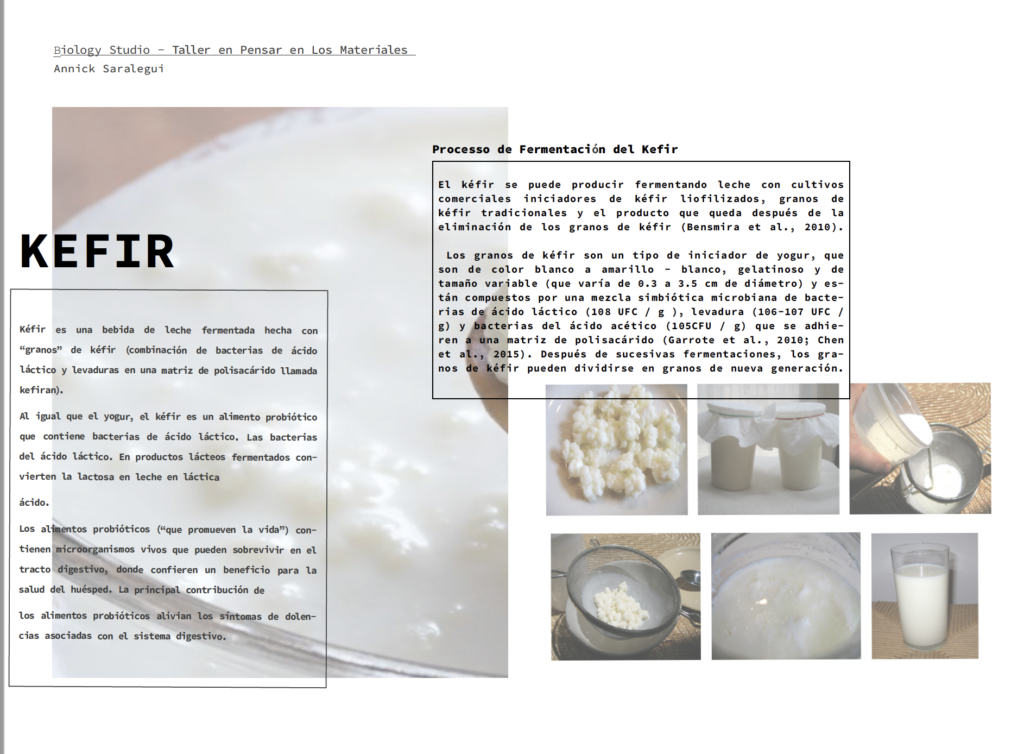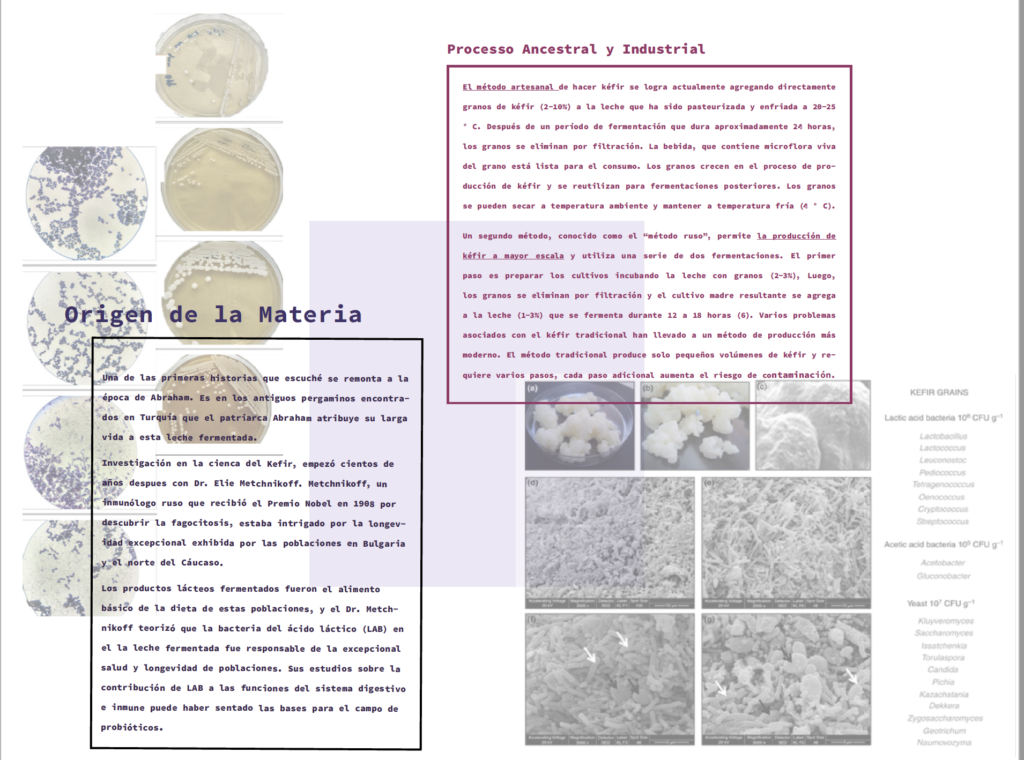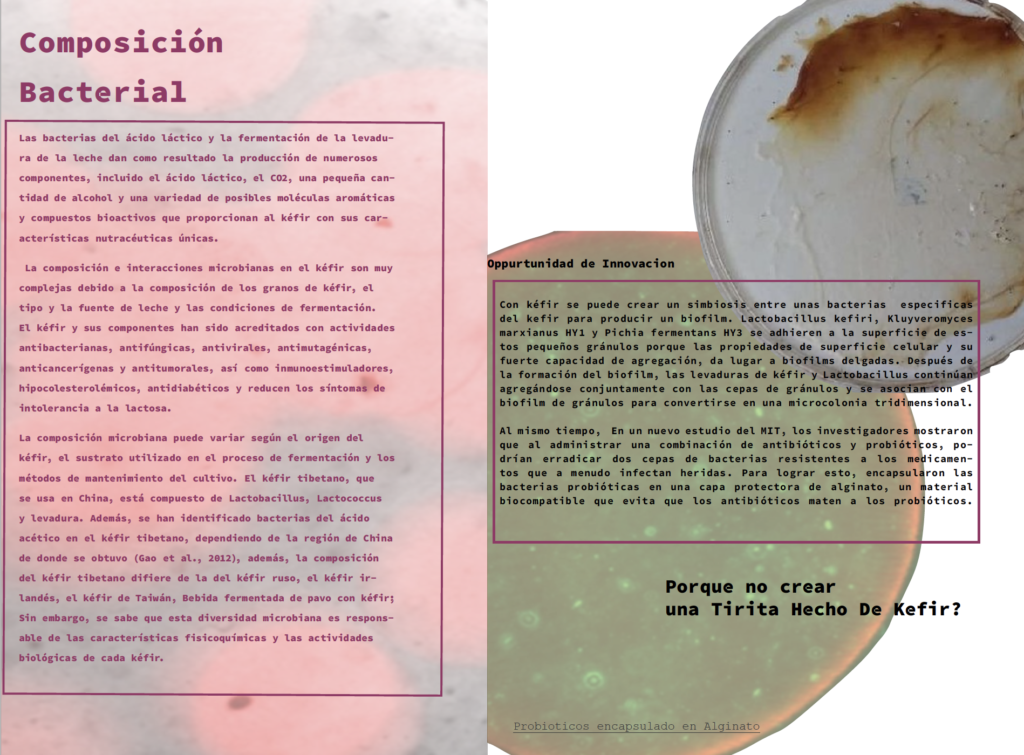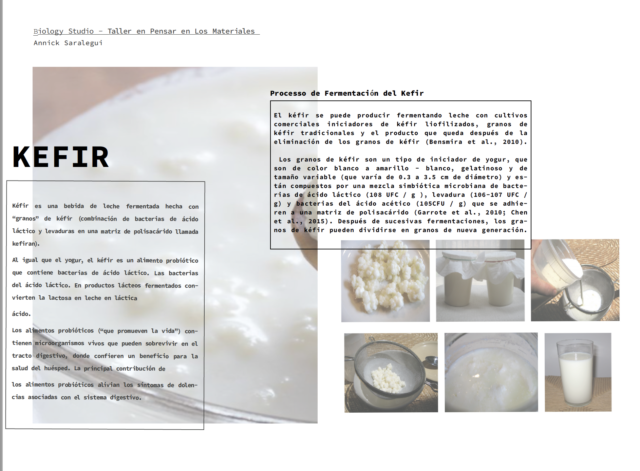What can fermentation tell us about microbial communities? What does Kefir a fermented food product made up of yeasts, acetic acid, and bacteria and Soil have in common? They both rely on a symbiosis. And to date, plant and bacterial microbiome interaction, are somewhat unknown. Fermented foods have been around for thousands of years, and our beloved Kombucha, Kimchi, and Beer, Yogurt and kefir in particular, all rely on a symbiotic relationship. The relationship allows for a communication interaction between the different microbes to turn on and off specific enzymes that change the biochemical composition of the food. There’s 3 types of fermentations: “Lactic acid fermentation; where yeasts and bacteria convert starches or sugars into lactic acid in foods like sauerkraut, kimchi, pickles, yogurt and sourdough bread, Ethyl alcohol fermentation; where the pyruvate molecules in starches or sugars are broken down by yeasts into alcohol and carbon dioxide molecules to produce wine and beer. Acetic acid fermentation of starches or sugars from grains or fruit into sour tasting vinegar and condiments.”(https://eatcultured.com/blogs/our-awesome-blog/fermentation-the-basics) As I was searching into the world of fermented food, I quickly realized that kefir was the outlier fermented food. The research in regards to Kefir was sparring and all I could find was videos of middle aged women giving how-to videos on how to ferment their Kefir. The videos are actually quite interesting in that they all start out with a “starter mother culture” that you submerge in milk (sugar), to initiate the fermentation process. Kombucha has probably the strangest mother culture that looks like a gooey, slimy jellyfish called SCOBY which literally stands for Symbiotic Culture of Bacteria of Yeast. But Kefir is interesting, in that it has the most diverse symbiotic bacteria like: Lactobacillus, Lactoccus, Cryptooccus, Gluconbacter, Pichia, Candida, the list goes on….. At the same time, the diversity of bacteria within Kefir delivers a higher dosage of probiotics compared to other fermented foods. Even Abraham from the bible credits kefir for his long life.
Over the past few weeks, I have been working with a biologist, Edith Medina via. Zoom who works out of BiologyStudio a community biomaterials lab in Mexico City to see how I can take this investigation of symbiotic interaction in Kefir and expand it beyond fermented foods. A recent study out of MIT showed how probiotic bacteria diversity can heal wounds faster, anf knowing that Kefir delivers a high amount of probiotics I plan to isolate and identify the symbiotic community that can allow the Kefir to form a thin- sheet-like biofilm similar to alginate wound dressing that can serve as a better alternative to a bandage “bio-bandage”. Working with this knowledge of symbiotic communities, I want to expand it further and have plans the understand how plant-bacterial microbiome communicate. Some scientists believe that “plant probiotics” can prevent disease, salinity toxicity, and other factors, however, an adequate method to understand the microbiome’s health as a whole, is still unknown. “bacteria, fungi, and viruses are usually studied separately, although they coexist and likely often interact with each other (Saikkonen et al., 2004; van Overbeek and Saikkonen, 2016).
Soon, I will see how I can apply genetic engineering tools, like bioluminescent biosensing using the lux gene to manipulate the microbiome so that we can better understand how the microbial communities are assembling, working together, and affecting plant health.
I made a presentation for my biologist mentor Edith Medina, she speaks Spanish so I wrote it in Spanish but have plans to convert it to English!



I made a presentation for my biologist mentor Edith Medina, she speaks Spanish so I wrote it in Spanish but have plans to convert it to English!
